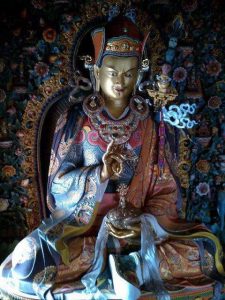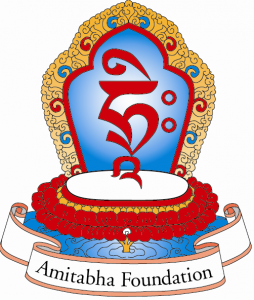
Short History of the Phowa
“We have four major kinds of suffering in our lifetime: birth, sickness, old age and death.
For those who are already grown up, birth suffering is over. For sickness suffering there are many helpers (our family and relatives, friends and community) and all different kinds of treatment. For old age suffering, no matter what different kinds of treatment we do to our body, we are going to get older each second, each hour, and each day. Ultimately, we cannot make ourselves younger.
Death is our biggest suffering, and our biggest mistake is not to think about it. Our family members, relatives and friends cannot join us at our death moment. We are alone with the results of the positive, virtuous, good deeds we did in our life. These results are all that is with us, and is our self-protection.
Phowa practice is the best way to free oneself from the suffering of the three Lower Realms and Bardo (Intermediate State). It is the easiest way to reach the Buddha Amitabha Pure land and the quickest way to attain Enlightenment.” – H.E. Choeje Ayang Rinpoche
In the 8th century (787 c.e.) Dharma King of Tibet Lord Thri-song Deu-Tsen wished to bring Buddhism to Tibet and invited renowned scholar Shantirakshita and Guru Padmasambhava (Guru Rinpoche). Guru Rinpoche and the great scholar Shantirakshita established the Samye monastery and the Buddha-Dharma began to flourish in Tibet.
Guru Padmasambhava remained in Tibet and stayed in many remote mountain places, perfecting the stages of meditation and subduing obstructing forces to the Dharma. During the tenure of Samye’s construction Guru Rinpoche was in retreat at Chimpu, south of Lhasa.
Also at this time, a fire broke out at the Palace, destroying the home of the King’s head minister Nyima. Minister Nyima had been in the process of moving and while packing some belongings by the light of a lantern a spark jumped and started a small fire. The fire quickly spread and burned the entire home to the ground, tragically killing all thirteen people inside including his beloved parents. Many innocent lives were lost including the Minister’s horses, mules, and cattle.
Minister Nyima was devastated and heart-broken by this mistake. Feeling deep remorse for those beings which lost their lives by his carelessness and weeping with great sorrow, Nyima could not stop thinking of the suffering he had caused to his parents and the others. He went to Dharma Lord Thrisong Duetsen for forgiveness.

Guru Padmasambhava
The King told Nyima killing ones own parents is one of the 5 most heavy sins/negative karmas and cannot be purified like other karmas, leading directly to the lower realms. (1-Intentionally murdering one’s father, 2-Intentionally murdering one’s mother, 3-Killing an Arhat or Bodhisattva (any fully enlightened being), 4-Shedding the blood of a Buddha, or 5- Creating a schism within the Sangha). Unable to offer any refuge himself to the minister, the King set out to find and supplicate Guru Rinpoche for his help.
Guru Rinpoche upon hearing of the Minister Nyima’s deep remorse and sorrow, entered the samadhi of clear light and traveled to the Pure Land to see Buddha Amitabha. There he told Buddha Amitabha about the suffering of Minister Nyima and asked Buddha Amitabha for a special Dharma that might free sentient beings from the heaviest negative karmas.
Buddha Amitabha then gave this Phowa teaching to Guru Padmasambhava who in turn transmitted it to the Minister Nyima. In this way until today the Phowa lineage remains an unbroken line of succession.
Through the path of Phowa, Minister Nyima’s consciousness attained to the Pure Land Dewachen. Many different signs appeared like rainbows and relics from his body at this cremation.
Brief history of The Great Drikung Phowa Lineage
The Drikung Kagyu order of Tibetan Buddhism holds the precious teachings which Shakyamuni Buddha taught for the benefit of all sentient beings. This lineage also possesses the complete transmission of the meditative practices of the Five-Profound Paths of the Mahamudra and the Six Yogas of Naropa.
The Drikung order is famous for its ability to successfully transfer the power of the Phowa meditation to initiated and devoted practitioners who practice it. Thus, the Phowa transmission given by the Drikung Lamas came to be known as the ‘Drikung Phowa Chen-mo‘ – the Great Drikung Phowa.
Drikung Phowa Ch’en-mo ceremonies are held every twelve years at Dro-ngor Sum-dho at Drikung in central Tibet. The fame of this Phowa continued to spread as thousands of participants would experience the signs of the Phowa during the ‘Lung’ (Oral Transmission Blessing ) .
